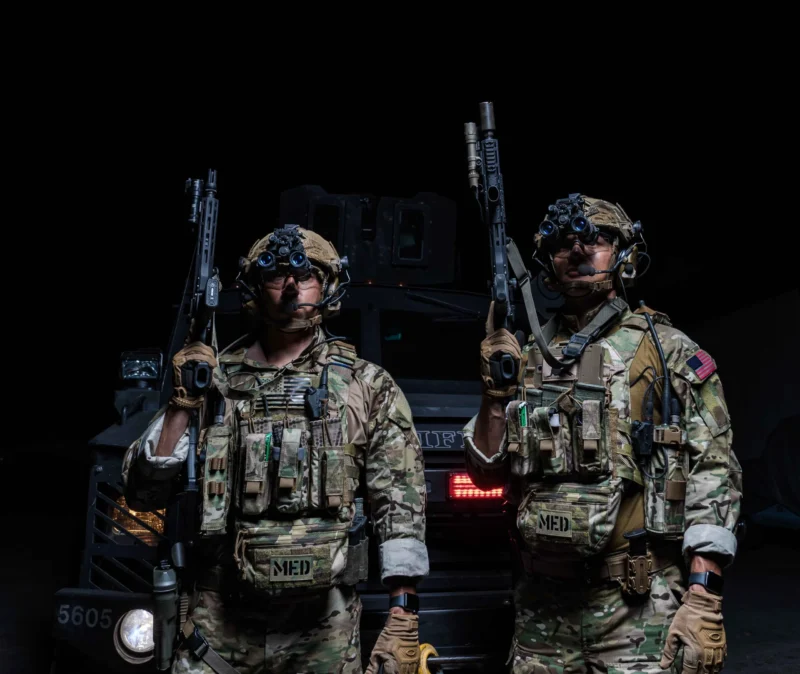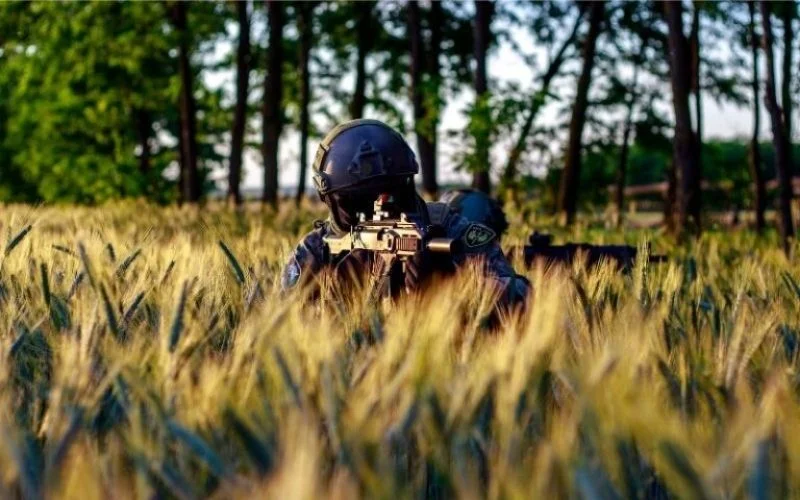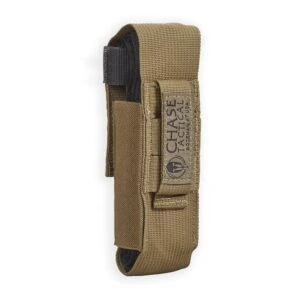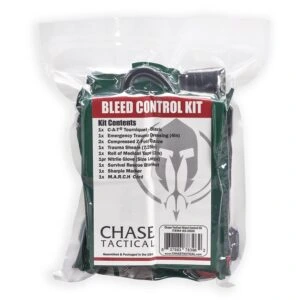First Aid Kits For Emergencies: Why Preparedness Starts With A Box

Emergencies do not provide time to prepare. In the event of an accident or injury, the initial few minutes are crucial. During these minutes, a First Aid Kit (FAK) is greater than a box of bandages—it is the difference between calm and pandemonium, recovery and danger, life and death.
From highways to homes, classrooms to construction sites, having a readily available FAK is crucial. But why are these kits so critical? What should they have in them? And how do you select the best one?
Shop Chase tactical medical gear that saves lives!
What Is a First Aid Kit?
A first aid kit is a collection of medical equipment used to administer immediate treatment for injuries or illnesses. Its intention is not to substitute for professional healthcare, but to provide essential, in many cases life-saving, aid during those critical minutes before the arrival of medical professionals.
From a sprained ankle to a potentially fatal bleed, it is the best tactical gear for emergency preparedness. An FAK enables bystanders or first aid responders to minimize damage, manage symptoms, and avoid complications.
Why Tactical Situations Need Specialized Kits

Tactical situations, military operations, active shooter responses, or high-risk security details demand a different standard of medical preparedness. Unlike household accidents or minor workplace trauma, trauma under such conditions is typically life-threatening.
Exsanguinating bleeding, gunshot wounds, blisters, blast injuries, and tension pneumothorax are all common types of trauma found in these circumstances. The first responder would typically not be a medic, but rather an officer, soldier, or civilian with minimal medical training. Therefore, tactical first aid kits must be uncomplicated, easy to employ, and contain equipment that addresses fundamental interventions such as hemorrhage control, airway management, and wound stabilization.
The Role of Tactical First Aid Kits
Response time is everything in a tactical situation. An adequately stocked tactical first aid kit is not merely a collection of medical supplies—it’s an air defense system.
1. A Critical Early Intervention Saves Lives
The few minutes following a trauma wound, generally referred to as the “golden hour”, are most critical to the prevention of death and further complications. Tactical first aid kits are designed to enable responders to stabilize injuries in this margin of time, buying precious time until higher-level care becomes available.
2. Designed for Use by Anyone on Your Team
Knowing that the first responder may not necessarily be a professional medic, tactical kits are designed to be easy to apply. Tactical kits hold items and materials that can be quickly used in emergencies by even a person with minimal medical training to provide quality care at the moment it is needed.
3. Continuation of Care in Hard-to-Reach Areas
In combat or isolated environments in which evacuation is delayed, tactical first aid kits are essential. They allow responders to provide longer-term care, controlling serious trauma and preventing worsening until evacuation or proper medical care can be obtained.
Key Features of a Tactical First Aid Kit

Not all first aid kits are the same. Tactical kits have several unique features that make them more effective in adverse conditions:
1. Modular Design
Most tactical kits employ a modular approach to organizing supplies by category, such as bleeding control, airway management, and burns. This speeds deployment in emergencies.
2. MOLLE Compatibility
As they are for military and law enforcement use, the kits are usually MOLLE-compatible, allowing easy mounting onto vests, belts, or packs.
3. Durable Materials
Tactical kits are built to withstand harsh environments. Weather-resistant zippers, reinforced seams, and rugged cases seal supplies from water, dust, and shock.
4. Rapid Accessibility
Many come with tear-away or rip-open pouches for fast access when every second counts; ease of access is just as critical as what’s inside.
Essential Components of a Tactical First Aid Kit

The contents of a tactical first aid kit go far beyond simple bandages and ointments. Here are the essential components:
Hemorrhage Control
- Combat Application Tourniquets (CAT): A common feature in all tactical first aid kits, tourniquets are used to stop life-threatening bleeding from a limb injury. Look for models like the Gen 7 CAT Tourniquet, which is designed for single-handed, rapid application.
- Emergency Trauma Dressings: Pressure dressings or bandages press down and stop bleeding immediately. They come in handy when attending to gunshot wounds or deep cuts.
- Hemostatic Agents: QuikClot gauze or similar hemostatic dressings accelerate the body’s clotting process, which is particularly helpful for junctional or deep wounds where a tourniquet may not be applied.
Airway & Respiratory Management
- Nasopharyngeal Airways (NPA): Used to maintain the airway of an unconscious patient and typically used in conjunction with lubricating jelly for a safe insertion.
- Chest Seals: For open chest wound management (sucking chest wound), vented chest seals such as the HyFin Vent Chest Seal prevent air from entering the pleural space.
- Needle Decompression Kits: For the treatment of tension pneumothorax in trained personnel, a 14-gauge decompression needle is a valuable intervention tool.
Burn & Wound Care
- Burn Dressings: Hydrogel dressings, such as BurnTec, cool and protect against burn injuries, reducing pain and minimizing further tissue damage.
- Antiseptic Solutions: Alcohol swabs, iodine wipes, and wound cleanser solutions are used to clean and disinfect wounds before dressing.
- Bandages & Gauze: Sterile gauze pads, elastic bandages, and adhesive bandages are required to cover wounds, prevent contamination, and reduce bleeding.
Diagnostic & Supportive Tools
- Trauma Shears: Heavy-duty shears are capable of cutting through clothing, tactical gear, or seatbelts to expose wounds easily.
- Medical Gloves: Nitrile gloves are required for hygiene and the prevention of cross-contamination during medical treatment.
- Splints: Small, pliable splints, such as the SAM Splint, are used to immobilize sprains or fractures in the field.
Admin & Operational Supplies
- Sharpie Marker: Used to mark the time a tourniquet was applied or to mark a patient’s condition in the field.
- Emergency Blankets: Mylar blankets prevent hypothermia by holding in body heat after trauma, shock, or exposure.
- Casualty Cards: Devices used to record injury information for arriving medics or transport units.
Conclusion
Tactical first aid kits are more than just medical tools—they’re life-saving systems designed for the most demanding scenarios. Whether you’re a soldier, law enforcement officer, first responder, or prepared civilian, the right kit can be the difference between saving a life and waiting too long.
Select your kit based on your actual requirements. Know the application of every piece of equipment included in it. Never employ your tactical first aid kit as a second resort, but as your first line of defense.
Frequently Asked Questions
How frequently should I check my first aid kit?
You must check it every 3 to 6 months and immediately after each use to confirm that all contents are still present and not expired.
Can I create my first aid kit?
Yes, particularly if you have particular requirements. Ensure it is ANSI/ISEA compliant, if necessary, for workplaces.

